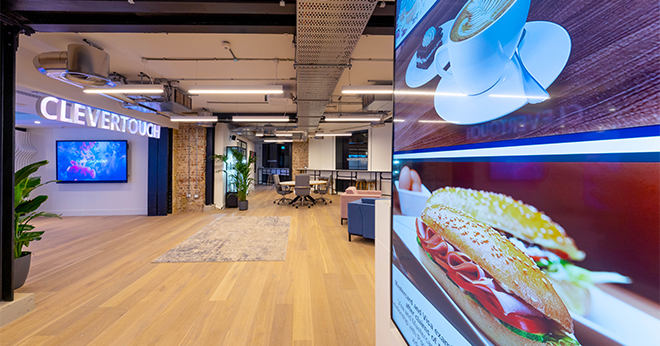Our digital signage team has compiled a checklist to help you navigate your way from start to finish.
Objective
Defining your reasons for incorporating digital signage into your business operations is crucial, and it can significantly impact the type of solution you choose. Determine whether you're deploying digital signage for brand promotion, sales growth, internal communication, or directional purposes. By identifying the specific purpose, you can ensure that your digital signage solution aligns with your business goals and objectives, and you can maximise the benefits of digital signage technology.
Measure
Secondly, identify how you will measure ROI. This links to the objectives identified above. For example, if your aim is to promote your brand, ROI could be measured by increased brand recognition. Other measures of your objective success include higher revenue and more knowledgeable and motivated employees.
Position
Determining the size of the space you have available and ascertaining the position of the screen within the building will influence mounting options; wall, floor, ceiling, or tilted. Additionally, it's crucial to ensure that the mounting option chosen is safe and accessible for all users. These factors will ultimately impact the final decision on your screen's most suitable placement and mounting options.
Installation
When developing a project, it's essential to consider all the steps involved in the process, including the requirements for deployment and post-deployment management. This should encompass a thorough evaluation of the power accessibility and connectivity needs or requirements. Suppose you plan on utilising Wi-Fi for your project. In that case, it's essential to consider the strength of the signal in the identified area to ensure a stable connection. Additionally, having proper documentation detailing the placement of each screen involved in the project will ensure a smooth and organised deployment process.
Responsibility
Engaging with stakeholders and discussing the responsibilities involved in managing the process is essential to ensure a smooth deployment. Regarding technology support, it is recommended to provide installation assistance and training for designated 'product champions'. Additionally, it is vital to establish a solid design and content strategy and identify individuals or teams responsible for keeping the content fresh and engaging. To maintain the system's effectiveness, it's recommended to revisit it regularly with stakeholders and make necessary adjustments.
Scale
To ensure the success of your project, it's crucial to establish its scale beforehand. This includes determining whether you will be using single or multiple screens and the number of locations involved. Consider whether you need to display content in landscape or portrait orientation, a video wall, a menu board, or a totem. Additionally, you'll need to decide whether your display will be touch or non-touch interactive and whether it will be used indoors or outdoors. Lastly, you should determine whether you prefer an all-in-one display or a separate media player and screen. Considering these factors, you can effectively plan where to place your message and what type of content should be displayed on each screen.
Content
It is essential to effectively communicate your message by clearly articulating your needs and identifying the most suitable multimedia formats. Possible options include live streaming, video, posters, images, Google Slides or similar presentation software, RSS feeds, social media platforms like Twitter or YouTube, and interactive zones. However, it is crucial to remember that content is the most critical element of any communication strategy. Therefore, ensure that your message is well-crafted and relevant to your audience, and choose the appropriate format to enhance its impact and resonance.
Solution
When considering a digital signage solution, choosing one that is intuitive, user-friendly, scalable, feature-rich, cost-effective, and flexible is essential. Opting for an industry-recognised platform that meets your current needs and provides added value through integrated solutions and ongoing development is advisable. This will ensure that your business stays ahead of the curve and is equipped to handle future challenges. With these factors in mind, you can be confident in your choice and enjoy the benefits of a powerful and efficient solution.

